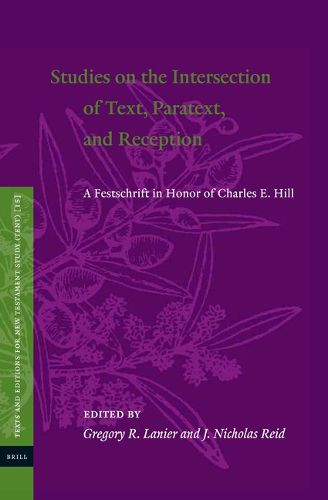Readings Newsletter
Become a Readings Member to make your shopping experience even easier.
Sign in or sign up for free!
You’re not far away from qualifying for FREE standard shipping within Australia
You’ve qualified for FREE standard shipping within Australia
The cart is loading…






Studies on the Intersection of Text, Paratext, and Reception brings together thirteen contributions from leading scholars in the fields of textual criticism, manuscript/paratextual research, and reception history. These fields have tended to operate in isolation, but recent years have seen a rise in valuable research being done at their multiple points of intersection. The contributors to this volume show the potential of such crossover work through, for example, exploring how paratextual features of papyri and minuscules give insight into their text; probing how scribal behaviors illumine textual transmission/restoration, and examining how colometry, inner-biblical references, and early church reading cultures may contribute to understanding canon formation. These essays reflect the contours of the scholarship of Dr. Charles E. Hill, to whom the volume is dedicated.
$9.00 standard shipping within Australia
FREE standard shipping within Australia for orders over $100.00
Express & International shipping calculated at checkout
Studies on the Intersection of Text, Paratext, and Reception brings together thirteen contributions from leading scholars in the fields of textual criticism, manuscript/paratextual research, and reception history. These fields have tended to operate in isolation, but recent years have seen a rise in valuable research being done at their multiple points of intersection. The contributors to this volume show the potential of such crossover work through, for example, exploring how paratextual features of papyri and minuscules give insight into their text; probing how scribal behaviors illumine textual transmission/restoration, and examining how colometry, inner-biblical references, and early church reading cultures may contribute to understanding canon formation. These essays reflect the contours of the scholarship of Dr. Charles E. Hill, to whom the volume is dedicated.